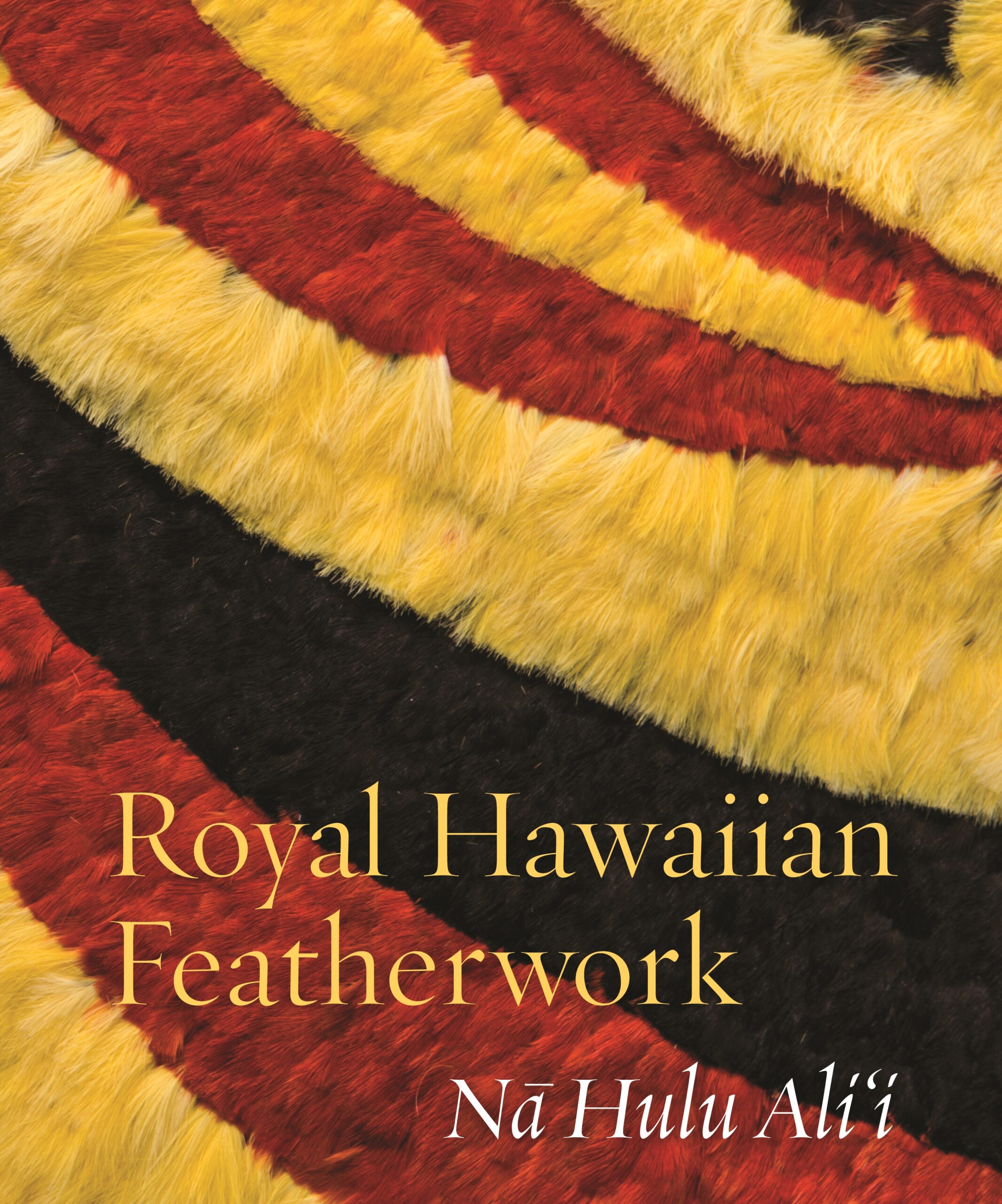Royal Hawaiian Featherwork: Nā Hulu Ali‘i
Additional Information
Awards
- Winner of the R. L. Shep Ethnic Textiles Book Award, 2016
- About the Book
-
Painstakingly constructed by hand of plant fiber and precious feathers from endemic birds of Hawai‘i, feather cloaks and capes provided spiritual protection to Hawaiian chiefs for centuries while proclaiming their royal status. Few of the artworks known as nā hulu ali‘i, or royal feathers, survive today except in museums and private collections. Through photographs and scholarly essays, Royal Hawaiian Featherwork highlights approximately seventy-five rare examples of the finest featherwork capes and cloaks (‘ahu‘ula) extant, as well as royal staffs of feathers (kāhili), feather lei (lei hulu manu), helmets (mahiole), feathered god images (akua hulu manu), and related eighteenth- and nineteenth-century paintings and works on paper.
With their brilliant coloring and abstract compositions of crescents, triangles, circles, quadrilaterals, and lines, the artworks are both beautiful and rich in cultural significance. In the seventeenth and eighteenth centuries, featherworks were key items of indigenous Hawaiian diplomacy, used to secure political alliances and agreements, worn as battlefield regalia, and seized as spoils from defeated chiefs. Later, in the nineteenth and early twentieth centuries, the featherworks—used in trading and gifts to foreign visitors—became symbols of Hawaiian heritage and cultural pride.
This stunningly illustrated volume also serves as the catalogue to accompany the first exhibition of Hawaiian featherwork to be staged on the U.S. continent, scheduled for a six-month run starting in late August 2015 at the Fine Arts Museums of San Francisco. The book and exhibition provide an overdue opportunity for the public to discover the central role these artworks played in the culture and history of the Hawaiian Islands, to explore their unparalleled technical craftsmanship, and to discover an aesthetic tradition unique to the Hawaiian archipelago.
Essays by: Samuel M. Ohukaniōhia Gon III, Marques Marzan, Maile Andrade, Noelle Kahanu, Betty Kam, Adrienne Kaeppler, Stacy L. Kamehiro, Christina Hellmich, and Roger Rose.
- About the Author(s)
-
Leah Pualahaole Caldeira, Editor
Leah Pualaha'ole Caldeira is collections manager of the Bernice Pauahi Bishop Museum Archives, where she oversees manuscripts, art, photographs, recordings, and other archival materials related to Hawai'i and the Pacific.Christina Hellmich, Editor
Christina Hellmich is curator in charge of the arts of Africa, Oceania, and the Americas at the Fine Arts Museums of San Francisco and a specialist in the arts of Oceania.Adrienne Kaeppler, Editor
Adrienne Kaeppler is curator of Oceanic ethnology at the Smithsonian Institution in Washington, D. C. She has carried out field research in Tonga, Hawai‘i, and elsewhere in Polynesia. Renowned for her work on the ethnography and collections from Cook’s voyages, she continues to focus on connections between social structure and the visual and performing arts.Betty Lou Kam, Editor
Betty Lou Kam worked at the Bernice Pauahi Bishop Museum for thirty-four years, studying primary source collections and cultural artifacts to present exhibitions, publications, programs, and lectures. Now retired, she serves as a vice-chair and commissioner for the Mayor's Office on Culture and the Arts in Honolulu, board member for the Damien and Marianne Memorial Museum Foundation, and researcher and consultant to agencies on other projects relating to Hawaii culture and history.Roger G. Rose, Editor
Roger Rose is an anthropologist who has worked as a curator and consultant with the Bishop Museum's ethnological collections for more than four decades. His research and publications focus on kāhili in all their forms.
Contributors
- Stacy L. Kamehiro
- Supporting Resources
-





